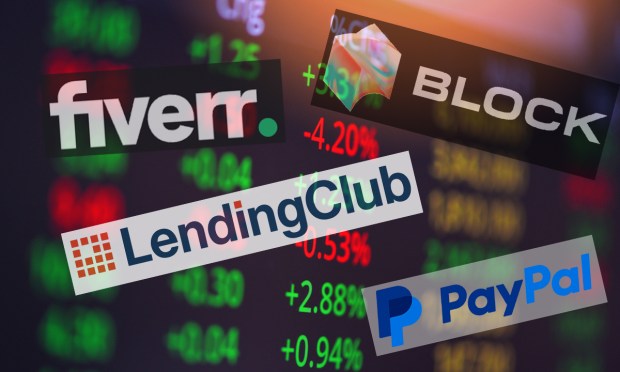CE 100 Index Slips 2.6% as Block and PayPal Drop Double Digits

Earnings were everywhere this past week.
And for the CE 100 Index, earnings-related headlines were the sole drivers of stocks to the upside — and overwhelmingly, to the downside.
To that end, the CE 100 Index lost 2.6% through the week, as all pillars lost ground.

The Pay and Be Paid segment was off 5.1% through the week as stocks gave back some of the gains made in the weeks running up to earnings.
And in that group, Block lost 18.9%. As noted here, Block’s two central businesses, Cash App and Square, showed continued momentum. Cash App boasted 54 million monthly transacting active customers, a growth of 15% year over year (YoY). There was a 34% increase in bitcoin revenue compared to the same period in 2022.
Tap to Pay, management said on the call, is on a path to become the “dominant way to pay” in the future, and that “markets outside the U.S. that we’re less than 1% penetrated in are [a huge] opportunity with a long runway for growth.”
PayPal gave up 15.2%. PayPal’s second-quarter results show a boost in transactions per active account and eCommerce growth increasing, too.
Total payment volumes (TPV) surged 11% to $377 billion in the most recent quarter. The number of transactions grew by 10% to 6.1 billion.
CEO Dan Schulman said, “eCommerce growth appears to have stabilized in the mid-single digits substantially above our estimates.” He noted, too, that branded checkout growth — where 43 of the top 100 merchants have moved to that checkout — has accelerated to more than 8% as of July, “our highest monthly growth rate.”
Buy now, pay later (BNPL) has been rolled out to 60 million of the company’s customers, according to management commentary on the call, and it is seeing a 25% to 30% increase in first-time users.
But at the same time, CFO Gabrielle Rabinovitch noted on the call that “like the broader industry, we’re seeing a normalization of our credit portfolio to pre-COVID delinquency levels across our consumer and PayPal working capital portfolio.”
Shopify Leads Shopping Pillar Lower
The Shopping pillar was off by 4%. Shopify slid 12.3%. In its own earnings results, its first since the sale of its logistics arm, sales surged 31% YoY to $1.7 billion, on the heels of a 61% rise in business-to-business (B2B) gross merchandise volume (GMV) in the initial half of 2023, and a companywide gain in Merchant Solutions revenues of 35% to $1.3 billion.
The Banking group declined 3.1%, led by LendingClub, which lost 9.8%
LendingClub reported results that showed flat net interest income but pressure on loan origination volumes. Loan originations in the most recent quarter were $2 billion, down 13% from the first quarter and down 47% from a year ago.
CEO Scott Sanborn noted on the conference call that banks are selling loan portfolios at deep discounts, which in turn is adding supply into a saturated market.
“This is putting pressure on loan sales pricing,” said Sanborn, who added, “We don’t believe that this market dynamic is sustainable, and in the meantime, we’re leaning into our bank advantages to create new profitable structures to support marketplace volumes.” The company will test and launch an integrated mobile app that combines lending, spending and savings into what Sanborn termed “a single experience.”
A few notable performances by companies managed to buck the overall downward trend.
In the Enablers segment, which sank 2.1%, Fastly surged 18.8%. Companywide revenues were up 20% YoY to nearly $123 million, as average enterprise customer spending gained almost 3%, measured quarter over quarter.
And in the Work segment, which gave up 1.3%, Fiverr was up 9.6%. As we noted in our own coverage this past week, the company’s latest results shine a light on momentum underpinned by new product launches and buoying 5% YoY growth in Q2 revenue to $89.4 million.
Among those launches:
Fiverr Pro, Fiverr Enterprise, Fiverr Certified, Fiverr Business Solutions, and Fiverr Neo. First-time buyers, according to management commentary on the call, are spending 15% more on their initial transactions than had been seen previously.
